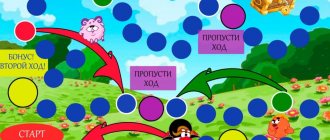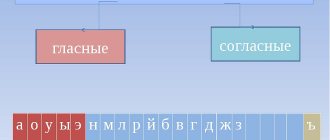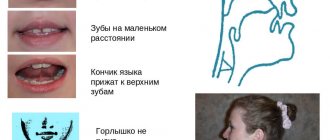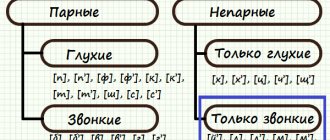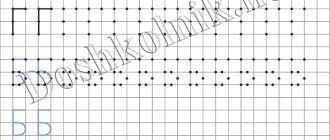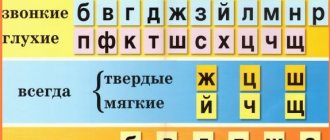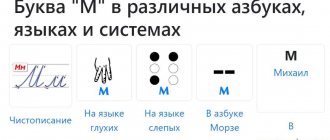Riddles and poems
Also on the site there are riddles about the sound, the letter “N” and poems about the sound, the letter “N”. Riddles about the sound and the letter N not only help you learn the letter, but also develop ingenuity and creative thinking. You can download riddles about sound and the letter N on the website.
Poems about sound and the letter N will help develop a sense of rhythm and memory. Learn poems about the sound, the letter N with your kids.
Article:
The sounds [n], [n' - n] normally appear in a child between the ages of 1 and 2 years.
If a child at 2 years old does not have the sounds [n], [n'], be sure to consult a speech therapist.
If in the child’s speech the sounds [n], [n'] appear in the nasal version (maybe even before 2 years), contact a speech therapist as soon as you notice it. Distorted sounds are never restored on their own.
How to pronounce the sound [n].
- The sound is nasal;
- The soft palate is lowered, air passes through the nose;
- Lips and teeth are open;
- The tongue is wide, spread out, the front part of the tongue closes with the upper teeth or alveoli.
- Vocal cords are closed;
- Articulatory features of the sound [ n ] .
[n] – consonant sound. The air escaping from the oral cavity encounters a barrier;
[n] – nasal sound. The soft palate is lowered, part of the air passes through the nose;
[n] – ringing sound. When pronouncing the sound [n], the vocal cords are closed, vibrate, and a voice is formed;
[n] – stop-passive sound according to the method of formation. The front part of the back of the tongue forms a bridge with the upper teeth or alveoli, the air stream goes through the nose;
[n] – anterior lingual sound at the place of formation. The barrier is formed by the front part of the back of the tongue.
- Acoustic signs of sound [ n ] .
[n] – sonorant (sonorous) sound. Noise is involved to a minimal extent;
[n] - hard sound - the middle part of the back of the tongue does not take an active part.
- Sound disorders [ n ] .
The pronunciation of the sound [n] is extremely rarely violated:
- absence of sound [n];
- “closed nasality”, replacing [n] with [t], [n] with [d], with combinations [nta], [nda];
- sound mixing [n].
How to pronounce the sound [n'].
- The sound is nasal;
- The lips are in a neutral position, taking the position of the next vowel;
- The soft palate is lowered, air passes through the nose;
- When pronouncing the sound [n'], the tip of the tongue is lowered behind the lower incisors;
- Vocal cords are closed;
1). Articulatory features of the sound [n'].
[n'] – nasal sound. The soft palate is lowered, part of the air passes through the nose;
[n'] – consonant sound. The air escaping from the oral cavity encounters a barrier;
[n'] – voiced sound. When pronouncing the sound [n], the vocal cords are closed, vibrate, and a voice is formed;
[n'] – stop-passive sound according to the method of formation. The front part of the back of the tongue forms a bridge with the upper teeth or alveoli, the air stream goes through the nose;
[n'] – anterior lingual sound at the place of formation. The barrier is formed by the front part of the back of the tongue.
2). Acoustic signs of sound [n'].
[n'] – sonorant (sonorous) sound. Noise is involved to a minimal extent;
[n'] – soft sound. The middle part of the back of the tongue rises towards the hard palate.
3). Sound disorders [n'].
The pronunciation of the sound [n'] is extremely rarely violated:
- absence of sound [n'];
- “closed nasality”, replacing [n'] with [t'], [n'] with [d'], with combinations [n't'a], [n'd'a];
- mixing the sound [n'].
Coloring
Coloring pages will help you remember the spelling N.
How are coloring books useful for preschoolers?
Coloring stimulates the development of fine motor skills, a sense of color, and artistic taste. Coloring can help prepare a child's hand for writing. Coloring pages with the letter H can be easily downloaded from our website.
Pictures and coloring books are true friends of children. The pictures help them figure out how to color this or that object and see what it looks like. Be sure to show the pictures to the kids before voicing the task. This way they will fulfill the requirements much more accurately. Coloring pages and pictures can be used as teaching aids in kindergarten or primary school.
Developmental tasks
- Circle the items that begin with the letter "H".
- Color the big and small letters “H” blue. Write a small letter “n” in a circle under each picture and circle the first letter “n”. Discuss who is shown in the pictures?
- What letter do all these words start with?
- Color the pictures, find out who is depicted on it, insert the letter “N” in the word “Dunno.” We are learning to write the letter “N” - you need to circle the letters with multi-colored pencils, and then find pairs of socks and connect them with lines.
- What letter does the word “sock” begin with?
- We learn to write capital letters “N”, large and small, by tracing the dotted lines.
- We look for five letters “H” where the pictures are presented and color them blue. (Letter game for attentiveness).
- Help Nyusha from the cartoon “Smeshariki” collect all the letters “N”, carefully circle the dotted lines, insert the letter “N” in the word “Nyusha”.
